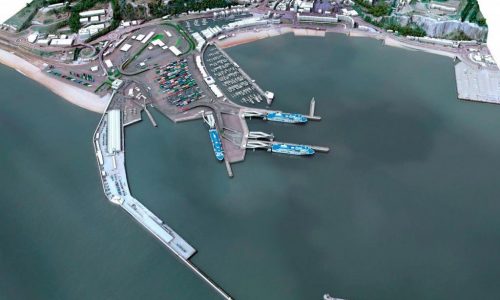The export value of Norwegian seafood, a key perishables market for airfreight, reached an all-time high for the first half of the year.
In the first six months of this year, Norway exported seafood with a value of NKR52.9bn. This is an increase in value of 3.5%, or NKR1.8bn, measured against the first half of 2019.
“Despite a very challenging spring with the corona crisis, we have still seen growth in seafood exports in the first half of the year. Salmon, trout, herring and mackerel have increased the most compared to the first half of 2019. A weak Norwegian krone is the main factor driving growth”, said Renate Larsen, CEO of the Norwegian Seafood Council.
“Increased quotas for mackerel, increased production of trout and a turn towards more consumption of salmon fillet have also helped to raise export value”, said Larsen.
Three important factors
Although the overall picture shows growth in value for Norwegian seafood exports in the first half of the year, Renate Larsen emphasized that several species and product types have experienced a decline in value, such as fresh cod, prawn and king crab. Three factors in particular have contributed to this:
- An almost global shutdown of the hotel and restaurant segment.
- Fewer flights due to severe travel restrictions.
Very bad weather in the main season for fresh cod which resulted in reduced catches.
“We also observe that salted fish, scallops and codfish were hit hard in the first half of the year. This is caused by, amongst other factors, major challenges associated with the corona virus in traditionally large markets such as Brazil and Italy”, said Larsen.
“When we convert to other currencies, we also see a decline in the export price for some products, which indicates a fall in demand. Reduced purchasing power, the risk of the corona virus flaring up again and uncertainty in the value chain are factors that make future prospects uncertain,” said Larsen.
Odd Emil Ingebrigtsen, Minister of Fisheries and Seafood, said: “A new record for seafood exports in the first half of the year is both gratifying and impressive. The seafood industry contributes to jobs along our entire coast. Even though the krone exchange rate plays in, the recent figures show that the industry has so far managed well through the corona crisis.”
Growth in EU salmon exports
- Norway exported 501,000 tonnes of salmon worth NKr35bn in the first half of 2020.
- Export volume remains at the same level as last year.
- Export value increased by NKr598m, or 2%, compared with the first half of last year.
- The average price for fresh whole salmon increased from NKr63.71 to NKr64.62 per kilo.
- Poland, France and Denmark were the largest recipients of salmon from Norway in the first half of the year.
“Salmon exports were hit hard by the corona crisis, with reduced turnover in the restaurant sector, but since April we have seen an improvement in the situation. Important markets such as Italy, the UK and France have moved towards normalization of demand following a sharp fall in consumption in March and April”, said Paul T. Aandahl, Seafood Analyst with the Norwegian Seafood Council.
The European Union (EU) has overall increased its value share of total exports from 70% to 71% in the first half, while exports of Norwegian salmon to Asia during the same period saw a slight reduction in value.
“Exports have varied widely from month to month and between markets. The largest variety has been China, with an almost stop in February. Here we have seen a gradual growth up to and including May, before it again stopped in June after a flare-up of the corona virus and the introduction of strict restrictions that affected food imports into China”, said Aandahl.
Salmon exports in June show the same trend as the half-year figures. Here too, there is a value growth:
- 83,500 tonnes of salmon were exported to a value of NKr5.8bn.
- There is a 2% increase in volume.
- The value increased by 3%, or NKr196m, compared with June last year.
New consumer trends in South Korea
South Korea has been the most stable market in Asia with growth throughout the first half of the year. In total, value growth has been 11%, taking total exports to NKr1.1bn.
“Norwegian salmon has a market share in South Korea of more than 80 percent, and most of this is eaten in restaurants,” said Gunvar L. Wie, fisheries envoy to Japan and South Korea for the Norwegian Seafood Council.
“However, we now see a clear shift in the consumer market where more and more people order their food online and eat it at home for fear of Corona infection. Salmon sales to the hotel and restaurant industry are declining, while grocery retail sales are growing sharply.”

